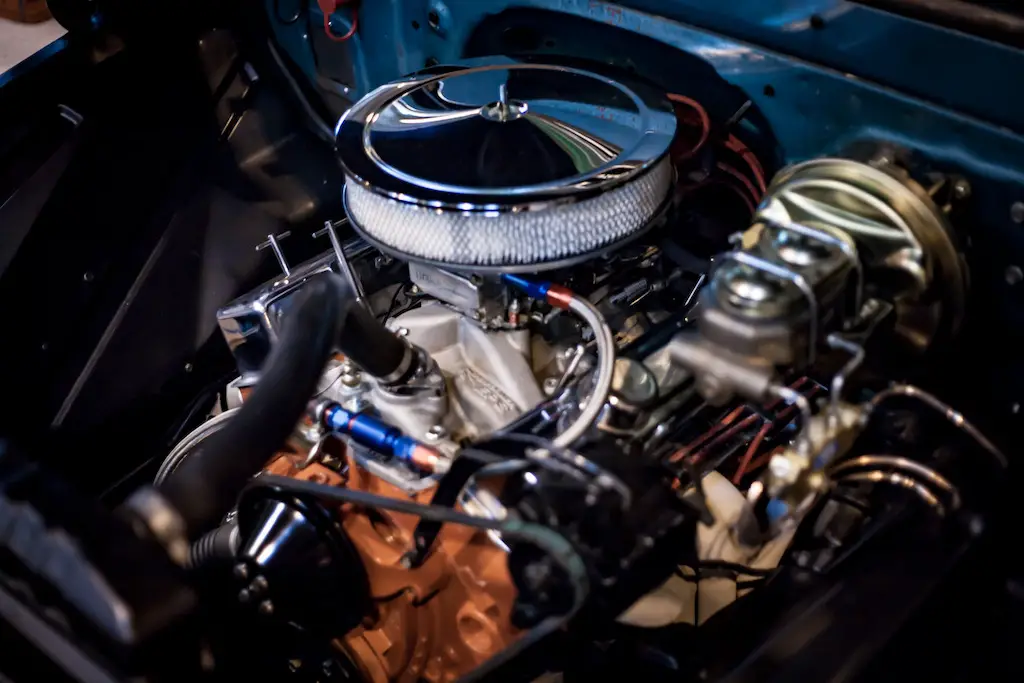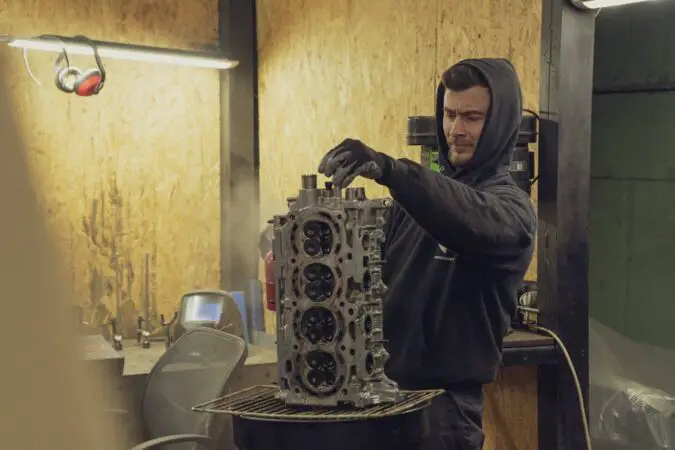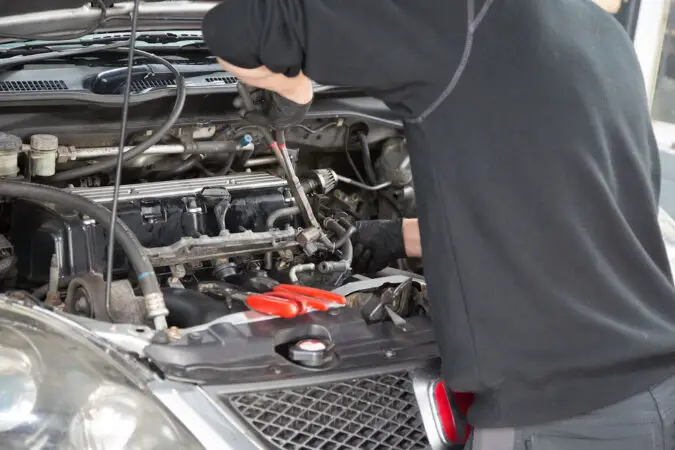Long block vs short block? This is a debate that has been going around for several years. There are individuals who love working on their cars and tuning them to their exact requirements. Usually, these are the types of people who go for a short block engine. On the other hand, if you are not good with engines, the long block is the better choice.
These engine types are semi-assembled engines that allow people to work and build their own cars. The biggest difference between the two engines is the fact that a long block engine comes with more number of parts included.
The difference between a short block vs a long block is very obvious to some of us. But the people who have just entered the market for a crate engine, making a choice between the two can be extremely perplexing. That is why here is everything you need to know about both of these engines for you to make the right choice for you.
- What Is A Short Block Engine
- What Is A Long Block Engine
- Short Block Vs Long Block
- Short Block Vs Big Block
- Conclusion
- Frequently Asked Questions
What Is A Short Block Engine
A short block engine is the fraction of a fully working engine or the bottom end part of a vehicle’s engine. It is a crate engine that is considered the smaller package when we talk about a car’s engine. A short block engine usually includes the cylinder block and parts like the connecting rods, cams, pistons, and a crankshaft.
The parts of a short block engine usually vary from manufacturer to manufacturer. A short-block engine is cheaper than a fully assembled engine. As said before it only comes equipped with some of the parts needed for an engine to work. This allows the owner of the engine to customize it according to their liking.
Tuning a car engine is a huge market and several automotive enthusiasts like customizing their cars. A short block engine gives an individual the power to do that. The extra parts needed for the engine to run can be tuned according to the owner. This gives people a lot of room to extract some extra power from the engine.
Pros Of A Short Block Engine
A short block engine is useful for people who want a car that is customized and tuned to their taste. It has several advantages that make people want to buy them. There is a huge market demand for crate engines like the short block engine. Here are some advantages of this type of engine.
1. The Cost Of The Engine
A short block engine costs significantly less than a fully assembled crate engine. For someone who has the knowledge of assembling engines, it is a very good choice. It is not only very easy on the pocket but also allows the owner to work on the engine with customizable parts. A short-block engine cost anywhere between $1000 to $3000.
2. Allows Customization
Another huge advantage of buying a short block engine is the ability to customize it. As we have said before the demand for short block engines is usually met by people who want to tune their engines according to them personally.
A short block engine only comes with parts like the cylinder block, connecting rods, cams, pistons, and a crankshaft. There are many more parts required to complete the engine which can be used to tune and customize your car.
3. Learning Experience
For someone who has the knowledge of how an engine works, customizing and assembling a short block engine is easy. On the other hand, if someone who wants to learn more about an engine a long block is the way to go. For someone who is just starting out assembling an engine can be a bit difficult. The upside to it is that an individual can learn a lot from assembling a small block engine.
Cons Of A Short Block Engine
Like any other piece of technology, the short block engine has its fair share of disadvantages or problems. Here is a list of all the problems an individual needs to look out for when they decide to buy a short block engine.
1. Requires More Assembly
One of the main disadvantages of owning a short block engine is that it is only a part of a fully functioning engine. A short block engine only contains a cylinder block, connecting rods, cams, pistons, and a crankshaft. So there are several more parts that are needed to be added to the short block to make it a working engine. Getting these extra parts not only requires more labor time but also requires more effort in putting together the engine.
2. Increased Cost
Even though the base price of a short-block engine is relatively low, the overheads can be extremely expensive. A short block engine does not come equipped with all the parts that are needed for an engine to run. Hence the owner has to go out and individually buy the rest of the parts needed. This might allow major customization but causes the price to increase significantly.
What Is A Long Block Engine
A long block engine is a more equipped variant of a short block engine. In layman’s terms, it is the complete version of the short block. This type of engine usually includes everything that is a short block, but it also adds the camshaft, cylinder head, valvetrain, valve covers, and an oil pan.
Even though a long block engine is not the complete package, there are still a number of components that need to be added. Components like the exhaust manifolds, fuel systems, and several electronic parts are usually missing. Assembling a long block engine is relatively easier than the short block. It further allows people to work on their cars and still customize them.
Pros Of A Long Block Engine
As said before a long block engine has most of the parts that are needed to make an engine complete. There are several advantages of the long block that come with a long block engine. Just like the short block, there are several people who prefer a long block over a short block and they have their reasons. That is why here is a list of all the pros that come with buying a long block engine
1. Includes More Parts
One of the biggest advantages of a long block engine is the fact that there are more parts available when you buy a long block. A long block usually has extra parts like the camshaft, cylinder head, valvetrain, valve covers, and an oil pan. This allows enthusiasts to still have the option of working on the engine but not have to do all of the work themselves.
2. Balanced And Coordinated System
Another advantage of a long block engine system is the fact that they are more balanced and coordinated in comparison to the short block. The difference between a short block and a long block is mainly the number of extra parts available in a long block engine. When one particular company is producing the parts that are assembled together, they give out a perfect fitting.
Another pro is the fact that there are several specialists working on the engine and they have done so several times so, therefore, they know what they are doing. This helps the engine be more coordinated and balanced overall.
3. Less Work To Install
Another point in the list of advantages is the fact that it is soo much easier to install and work on a long block engine. A long block engine has more parts that already come attached to the engine. These parts include parts like the camshaft, cylinder head, valvetrain, valve covers, and an oil pan. So a lot of the parts that need to be installed already come with the crate engine. Therefore it takes less time than usual to actually get all of the work done.
4. Requires Less Knowledge Of Engines
One more advantage of the list of pros for long block engines is the fact that they are not as complicated to assemble as a short block or a cylinder block. This is because most of the parts are already installed on these engines. So any new enthusiast who does not have a lot of knowledge about working on engines can experience working on their car and create the emotional connection a lot of us have with our cars.
5. Have longer Warranties
Another added benefit of buying a long block engine is that they have longer warranties. As most of the parts that are installed on the engine are from one company and hence not a lot of things can go wrong. Hence companies feel confident giving longer warranties with their long block engines.
Cons Of A Long Block Engine
There are several pros that come with a long block engine but it is not all good. There are certain cons that need to be brought to new enthusiasts. Hence, here is a list of all the problems you need to know before buying a long block engine.
1. More Expensive
One of the main cons that come with a long block engine is the price tag that comes along with it. Long block engines are more expensive than the short block engine by a huge margin. This is because of all the extra parts and the longer warranty that comes with the long block engine package.
2. No Flexibility
Another con that comes with a long block engine is the lack of flexibility with the customizations that can be done to your engine. Most of the parts required for building an engine are already attached and tuned. That is the reason why enthusiasts have less freedom to choose specific components and parts. This can be of hindrance to someone who wants a fully customized engine.
Short Block Vs Long Block
There are several differences that differentiate between a short block vs a long block. Any individual who is interested in buying a short or a long block engine needs to know about these differences.
Here is everything you need to know to know about the difference between these two engines.
1. Parts That Are Included
One of the biggest differences between the two types of engines is the number of parts that come with these engines. A short block engine is just like a more stripped-down version of the long block engine.
A short block comes equipped with parts like the cylinder block, connecting rods, cams, pistons, and a crankshaft. On the other hand, when we talk about the long block, it has everything that a short block has. It also includes parts like cylinder head, valvetrain, valve covers, and an oil pan. So to put it in layman’s terms a long block is a more assembled version of the short block engine.
2. Cost
Another major difference between the two types of engines is the cost of each of them can be bought at. A large block engine has more parts attached to it when compared to a short block engine. Hence a large block is more expensive.
The price for a short-block engine is anywhere between $1500 to $3000. On the other hand, a long block engine can cost anywhere between $3000 to $5000. It is a significant difference and if budget is a constraint then you might want to go for the short block engine.
3. Installation Time
As said before, the short block is just a less assembled version of a long block engine. It almost has half the parts that make a long block engine. This does allow several customization options but because of that, buying and tuning these new parts can take a significant amount of time.
Hence, when we talk about the installation time needed to assemble these engines, a short block takes longer to assemble as there are many more parts that need to be taken care of. If in turn, you decide to go for the long block engine, there are a lot fewer parts you need to buy and worry about. Alongside that, because all the parts are already installed and tuned, assembling the rest of the engine does not take a lot of time.
4. Warranty
Another difference you need to consider while choosing a short block or a long block for your engine is the warranty that comes with it. The entire package warranty that comes with a long block engine tends to be longer than that of a short block’s warranty. Normally a warranty covers all the parts that are included in the purchase.
You always need to check the specification and the parts included in your short block warranty. So in case you decide to buy a long block engine instead, you should not have to worry about the functionality of these other parts. This is why the warranties are better on these engines.
If you buy a short block engine with other parts installed separately, those parts obviously would not be covered in the warranty. That is why it is always important to check the warranty and specs of the engine you decide to buy.
Short Block Vs Big Block
There are several differences that are there between a short block engine vs a big block engine. But before we get into that you need to know what exactly is a short block engine and a big block engine.
The explanation of the short block engine is given previously in this article. Here is some information that will help you understand a big block engine and how it is different from a short block engine.
1. Big Block Engine Size
Big block and small block are usually descriptors of a V8 pushrod engine, commonly known as the overhead valve engine. The difference between the two is mainly the size. A big block engine is significantly bigger than a small block engine.
When we talk about the true difference between the two, it is more about the displacement, bore, and stroke than its actual size. Usually, a big block engine has greater displacement than 400 cubic inches. On the other hand, small block engines have smaller displacement.
2. Cylinder Stroke
Another difference between the two is the cylinder stroke difference of both engines. What defines from big and small is the stroke, also known as the up and down motion of the piston inside the engine. As the name suggests big blocks have long strokes while on the other hand, small blocks mean smaller strokes.
Hence to help you understand in a better way V-shaped blocks are small while on the other hand Y-shaped blocks are big. The Y shaped or the Michel engine was introduced by Ford back in the day. This engine type allows the connecting rod to travel further down in the block. This helps to increase the stroke of the engine.
3. Valve Arrangement
When we talk about the valve arrangement it doesn’t matter what size your engine is, big or small. The difference between the two types of engines lies between the engine heads and the valve arrangement type. Big blocked engines have a canted valve setup. This is an important instrument that can help increase the horsepower of your engine. Small blocks do not have this.
Crate Engine Shopping: Understanding Long Block vs Short Block
- There are three basic configurations of crate engines: short block, long block, and deluxe/complete.
- A short block consists of a block, crankshaft, rods, and pistons, and is the minimum configuration for a crate engine.
- Short blocks may include other items such as camshaft and timing gear, but that varies based on the manufacturer.
- A long block includes everything in the short block plus heads and typically the valvetrain.
- Deluxe long blocks include everything in the long block plus the carburetor, intake, distributor, oil pan, and even the spark plugs and wires.
- Short blocks are a popular option for someone who knows engines but has little experience building one.
- Long blocks are a great option for someone who knows engines but has little to no experience building one.
- Bare blocks are a block without any rotating parts and may need machine work before being built into an engine.
- Rotating assemblies consist of the crank, rods, and pistons and may come balanced along with the necessary bearings.
- Rebuilding an engine can be cheaper than buying new, but it depends on what’s wrong with the engine and short block cores are a popular option for saving time.
Conclusion
The debate regarding long block vs short block has gone on for a long time. At the end of the day, both these engines have their pros and cons. In addition to that, there will always be someone who prefers one over the other.
That is why if you’re someone who wants to work hard and put their minds to use on their project cars, the short block is the way to go. On the other hand, for anyone who wants to work on a project car and work relatively less, a long block is the correct choice. A long block is a good choice for first-time project car workers.
Frequently Asked Questions
Here is a list of all the common questions people have in regard to the debate long block vs short block.
What Is A Crate Engine
A crate engine or a crate motor is a functional fully assembled automobile engine. Just like the name suggests it comes tuned assembled and inside a crate. It is shipped and ready to be installed inside your car. Crate engines are manufactured by many different automobile companies. One of the main characteristics of a crate engine is the fact that it is ready to be installed when it is removed from the crate. All manufacturers have this in common.
What Is An Engine Block
An engine block is a piece of metal that is responsible for containing the cylinders and other parts of an internal combustion engine. In earlier days or older engines, the engine block consists of just the cylinder block to which a separate crankshaft is attached. The purpose of an engine block is to support all the components of the engine. Alongside that, the engine block transfers the heat created from the friction between the atmosphere and the engine. The material used for the engine blocks is either gray cast iron or aluminum alloy.
How Long Does It Take To Rebuild An Engine
Rebuilding an engine can take a long amount of time. It usually depends upon the person rebuilding the engine and the knowledge they have about automobiles. Rebuilding an engine can take several weeks, possibly months which also depends upon the parts that are required and how easily available they are. Rebuilding an engine usually involves things like rotating the assembly balance, replacing damaged parts, and checking the clearances and cylinder heads. This type of work requires some high-level expertise and accuracy. That is why it should not be rushed.
How Much Do Engines Cost
Usually rebuilding your engine costs less than replacing the whole engine. The costs of an engine widely depend on the type of engine you decide on buying and how much work, time, and effort you need to put in it. In general, the average price of a replacement engine is anywhere between $2500 to $4000. Performance engines can cost more than these engines. Usually, the price depends upon the size and power produced by the engine. If you decide to rebuild your engine, the first thing any mechanic will do is disassemble your engine. You need to inspect all the damaged parts and see what parts need replacing. There are several things involved in a rebuild of an engine. This might be cheaper but in the end, your engine should be working in proper order just like a new engine.




